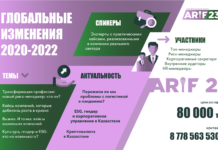Наши популярные онлайн курсы


The conventional wisdom suggests that risk management processes vary between strategic, operational, and project levels. But here’s a RM2 twist—none of this is true! Let’s say this upfront: the idea of differentiating risk management by organizational levels is fundamentally flawed.
Risk management is not about fitting into hierarchical structure; instead, it is driven by decisions. Each significant decision demands its unique risk management approach, methodology, and criteria. Whether it’s a strategic decision, budgeting, or investment management, the core of risk management is tailored to the specifics of these decisions.
“The levels of organization don’t matter because risk management is different not by level, not by hierarchy, not by organizational structure, but by type of decision.”
Reimagining risk management: a decision-centric approach

Forget the RM1 nonsense —strategic vs. operational—and focus instead on what truly matters: the decision-centric approach. Here are some examples to illustrate how risk management changes to fit various significant decisions:
- Strategic Decisions: Often employ scenario analysis, decision trees, or Monte Carlo simulations tailored to the specifics of the strategic question at hand.
- Budgeting and Investment: Often uses Monte Carlo simulations to either calculate budget contingency or cashflow@risk. Monte Carlo model usually sits on top of an influence diagram.
- Procurement and Production Forecasting: These might lean more towards scoring methods or again, tailored Monte Carlo simulations depending on the risk profile and decision intricacies.
- Fire Safety: This would require a wholly different methodology, usually driven by local safety regulation.
In essence, while the techniques like Monte Carlo simulations may remain constant, the methodology is anything but uniform. It’s shaped by the contours of each decision’s risk landscape.

The difference in application again shows the fundamental difference between RM1 and RM2 thinking. RM1 risk managers are trying to treat risk management like risks are the product, while in RM2 world risk management is just a step to getting to a better decision. I hope this discussion sheds some light on RM2 and the future of risk management.
And if this has piqued your interest in revolutionary risk management insights, consider subscribing to the Risk Academy youtube channel. Together, let’s redefine risk management beyond traditional confines.
RISK-ACADEMY offers online courses

+
Informed Risk Taking
Learn 15 practical steps on integrating risk management into decision making, business processes, organizational culture and other activities!
$149,99$49,99

+
Advanced Risk Governance
This course gives guidance, motivation, critical information, and practical case studies to move beyond traditional risk governance, helping ensure risk management is not a stand-alone process but a change driver for business.
$795































